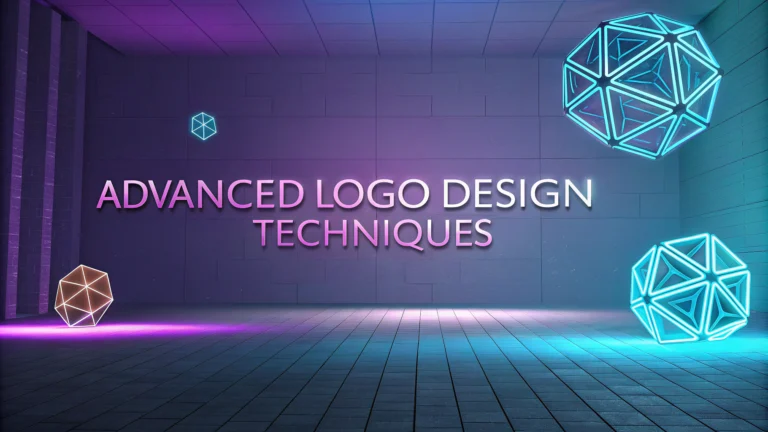Logo design combines artistic skill and strategic thinking to create memorable visual identifiers for brands.
This guide explores professional techniques that elevate logo designs from basic to exceptional.
Core Design Principles
- Simplicity: Remove unnecessary elements
- Scalability: Designs must work at any size
- Versatility: Logos should function across all mediums
- Memorability: Create distinct, recognizable marks
Essential Design Tools
- Adobe Illustrator: Industry standard for vector design
- Affinity Designer: Cost-effective alternative to Illustrator
- Figma: Collaborative design platform
Advanced Techniques
Master the golden ratio (1.618:1) for balanced proportions in logo elements.
Implement negative space techniques to create dual imagery, like the hidden arrow in FedEx’s logo.
Use custom typography modifications to create unique letterforms that maintain readability.
Color Psychology in Logo Design
| Color | Association |
|---|---|
| Blue | Trust, Stability |
| Red | Energy, Passion |
| Green | Growth, Nature |
Technical Specifications
- Create in vector format for infinite scalability
- Export multiple file types (AI, EPS, SVG, PNG)
- Test designs in both color and monochrome
- Maintain clear space around the logo
Common Mistakes to Avoid
- Following trends blindly instead of focusing on timeless design
- Overcomplicated designs that lose impact at smaller sizes
- Poor typography choices that affect readability
- Insufficient contrast between elements
Professional Resources
Join professional design communities like AIGA (www.aiga.org) for networking and continued learning.
Access design inspiration through platforms like Behance and Dribbble while developing your unique style.
Testing Your Design
- Print at various sizes
- View on different devices
- Test against competitor logos
- Gather feedback from target audience
Remember to document your design process and create a comprehensive brand guidelines document for client handoff.
Design Research Phase
Before starting any logo design, conduct thorough research on industry standards, competitor logos, and target audience preferences.
- Analyze market positioning
- Study successful logos in the industry
- Document client requirements
- Create mood boards
Client Communication
Initial Brief
- Establish clear project goals
- Define brand values and personality
- Set timeline expectations
- Discuss budget constraints
Presentation Strategy
- Present 3-5 strong concepts
- Show real-world applications
- Explain design rationale
- Document revision processes
Future-Proofing Designs
Create logos that remain effective across emerging technologies and platforms:
- Design for AR/VR applications
- Consider social media requirements
- Plan for animation potential
- Ensure cross-cultural appropriateness
Conclusion
Successful logo design requires a balance of creativity, technical expertise, and strategic thinking. Focus on creating timeless designs that communicate brand values effectively while maintaining versatility across all applications.
Remember that a great logo is not just about aesthetic appeal—it’s about creating a lasting visual foundation for brand identity that resonates with the target audience and stands the test of time.
FAQs
- What are the essential elements of an advanced logo design?
The essential elements include simplicity, scalability, memorability, versatility, relevance to brand identity, appropriate typography, balanced color psychology, negative space utilization, and proper proportions. - Which software tools are considered industry standard for professional logo design?
Adobe Illustrator is the primary industry standard, followed by Affinity Designer, Corel Draw, and Sketch. Vector-based software is essential as it allows for scalable, resolution-independent designs. - How important is the grid system in advanced logo design?
Grid systems are crucial for creating balanced, proportionate logos. They help maintain consistency, ensure proper spacing, and create mathematical harmony in the design, resulting in more professional and polished outcomes. - What role does typography play in advanced logo design?
Typography is fundamental in logo design, affecting brand personality, legibility, and recognition. Custom letterforms, proper kerning, and appropriate font selection are critical for creating distinctive visual identities. - How do you ensure a logo works effectively across different mediums?
Create various versions (full color, monochrome, reversed) and test the logo at different sizes, from favicon to billboard scale. Ensure it maintains clarity and impact across digital and print applications. - What are the principles of color psychology in logo design?
Colors evoke specific emotions and associations: blue suggests trust and professionalism, red indicates energy and passion, green represents growth and nature. Understanding these associations is crucial for effective brand communication. - How do you protect the integrity of a logo design through proper usage guidelines?
Create comprehensive brand guidelines specifying minimum sizes, clear space requirements, color variations, acceptable modifications, and prohibited uses to maintain consistent brand representation. - What makes a logo timeless rather than trendy?
Timeless logos focus on core brand values rather than current design trends, use classic design principles, maintain simplicity, and avoid overly complex effects or temporary style elements. - How do you effectively use negative space in logo design?
Strategic use of negative space can create dual imagery, improve visual interest, and enhance memorability. It requires careful planning and consideration of figure-ground relationships. - What are the key considerations when designing a responsive logo system?
Design multiple logo variations that maintain brand recognition across different sizes and contexts, from simplified icons for small displays to full lockups for larger applications.








